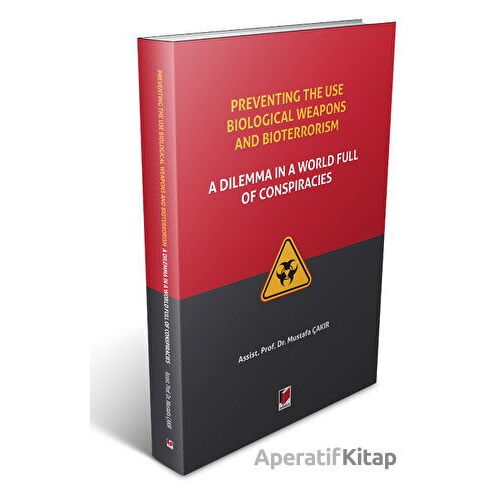Hiç mesaj bulunmadı
| Ödeme Türü | Toplam Tutar |
|---|---|
| Diğer Kredi Kartları | 300.00 TL |
| Havale / Eft | 300.00 TL |
| Posta Çeki | 300.00 TL |
- Vade farksız taksitler KOYU renkte gösterilmektedir.
- X+X şeklinde belritilen taksitler (Örneğin: 2+3) 2 taksit olarak işleme alınmakta ancak ilgili bankanın kampanyası dahilinde 2 taksit üzerinden işlem yapıldığı halde 2+3 yani 5 taksit olarak kartınıza ve ödemenize yansımaktadır. (2 taksit seçilmiş olsa bile banka kampanyası dahilinde ekstradan vade farkı eklenmeden işlem 5 taksite bölünmektedir.)
In all human history, man has always used biological weapons in his bellicose conquests. Since Alexander, who contaminated the drinking water of the cities he besieged with corpses of putrefying animals, until Sir Jeffrey Amherst, commander of the British troops in North America, who would have suggested using smallpox to fight against the rebellion of the population in the 18th century, which is certainly the first attack consciously proven to be biological.
Biological weapon or germ weapon as often called is a disease infecting agent such as bacteria, viruses, rickettsia, fungi, toxins, or other biological means that may be developed as weapons against animals including humans and plants. Some analysts consider and rank biological organisms as cultivated or genetically engineered to be the most plausible dangerous of all existing weapons technologies of today’s world.
After the works of Louis Pasteur in France and Robert Koch in Germany took microbiology to the next level by being able to identify biological agents and use them to attain certain scientific goal like determining the causative agents of a disease, international community did not delay to recognize the danger they can cause; to respond to this new information, they formulated two declarations; one in 1874 in Brussels and another one in 1899 in the Hague to prohibit the use of poisonous weapons than can be invented from or direct deliberation of germs. This has been followed by the prohibition of biological warfare in the 1925 Geneva Protocol that makes it illegal to use asphyxiating and poisonous gases in war. It prohibits states from using biological and chemical weapons in international armed conflicts, more than 140 States signed the protocol.
By August 2018, a total number of 175 states-parties have signed and ratified the Biological Weapons Convention (BWC), Six States have only signed and did not ratify (Central African Republic, Egypt, Haiti, Somalia, Syria, and Tanzania), other countries like Chad, Comoros, Djibouti, Eritrea, Israel, Kiribati, Micronesia, Namibia, South Sudan and Tuvalu have neither signed nor ratified.1 Countries started to sign the BW Convention on April 10, 1972 and 3 years later, the convention had its implementation ever since. Any country which did not join the convention prior to the time it was enforced may do so at any time. Under the terms of the BWC, member states are prohibited from using biological weapons in warfare and from developing, testing, producing, stockpiling, or deploying them. Although the provisions of BWC prohibit the use of germs of any kind when are used as a means of warfare as we will further see in this book, different states have kept on producing biological weapons because there is still no means of verification established in this convention though it made too much of improvements vis-à-vis the 1925 Geneva Protocol.
Biological weapons have also been used by terrorists in what scholars called “Bioterrorism”. Bioterrorism is defined as the use of biological agents by terrorists to create a threat to a certain community in order to boost their social or political agenda which mainly aimed at making people feel unsafe and make them lose hope from the protection by their governments.
Defense of biological warfare whether civil or military one is also something to discuss in this book since this include many fields such as Biotechnology, Law, Politics, Military strategies and public health as well as public policy. Civil defenses involve warning systems, vaccines, medicines, training of responders, and public education as well as in planning of emergency procedures whereas military will target protective measure like the use of protective masks.
With the modern technology things a



